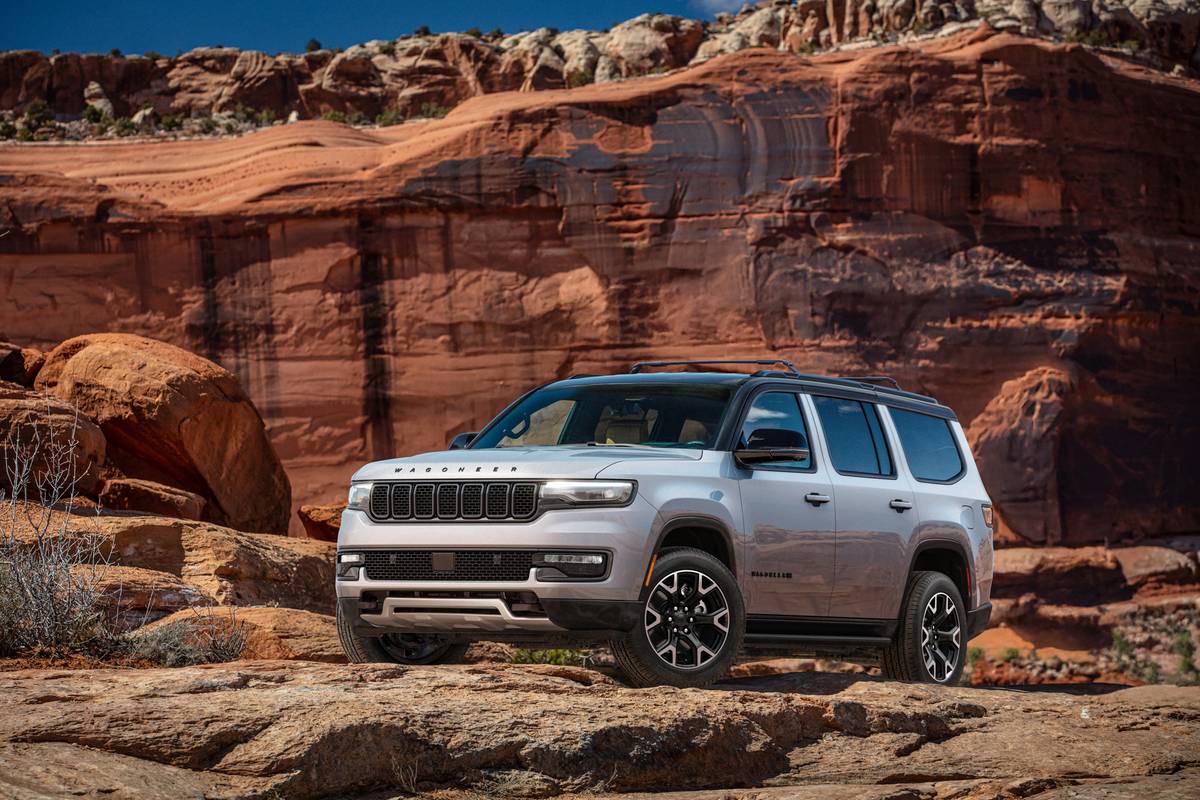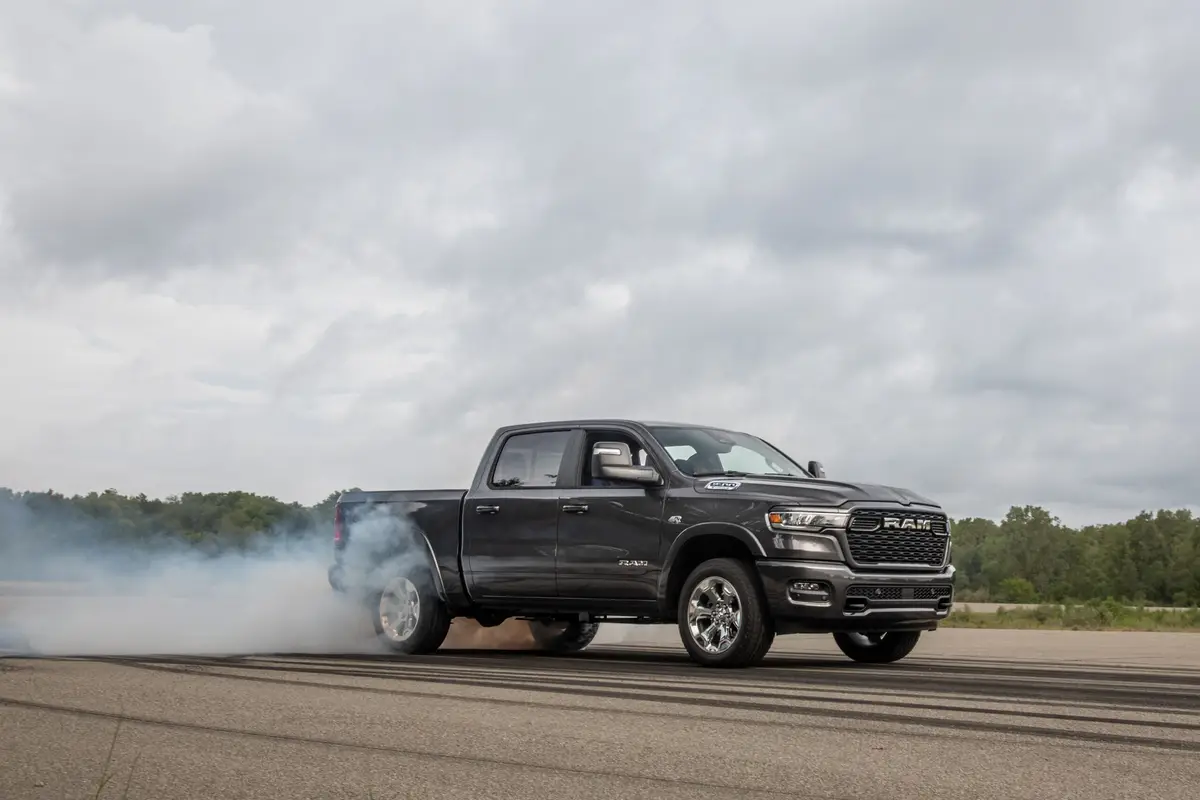Cincinnati.com's view
Toyota’s new Prius would make a lovely Christmas present. If you agree, you’d better log on and order one now. Toyota’s approach to marketing its hybrid vehicle is as unusual as the car itself.
The American version is just now starting to be delivered to those “early acquirers” who signed up months ago through Toyota’s Web site, www.toyota.com, which is still the only way to get one. The site (and I had this confirmed by the regional office) says if you initiate the process now, you’ll have your car by December or January.
They’re not making it easy, are they? Well, they don’t want to. Because the hybrid concept is new, they want to be absolutely sure that the right people wind up sitting behind the wheel. They want technologically savvy folks who can understand the car’s quirks and appreciate its novel advantages.
I tested a home-market Prius last year. Its markings were all Japanese and the steering wheel was on the right side, or wrong side, if you want to be chauvinistic about it. Even in that state, it was a delightful experience, and I pronounced it ready for prime time.
Since then, Toyota has sold more than 35,000 units at home, and incrementally improved the car a number of times prior to its U.S. debut.
Perhaps a discursus on what a “hybrid car” is will be useful. The Prius has both a gasoline engine and an electric motor. Under the direction of a dedicated computer, these two can work separately or together to propel the car. This cooperative venture results in extraordinary gasoline mileage and extremely low emissions – in a time when more conventional cars are boasting about their “low emission” ratings, the Prius qualifies as a “super ultra low emissions vehicle.” It sounds as if the California Air Resources Board had to invent a new category, doesn’t it? Drive this little dude in L.A., and the air that comes out might be cleaner than what goes in.
An electric motor is essentially non-polluting, save for what might be emitted at the point of generation. Energy storage, i.e., batteries, have always been the stumbling block. Despite the long-promised breakthroughs, they remain heavy, expensive and of insufficient energy density to be a practical power source for anything beyond a golf cart. Run out of juice on the highway and you’re in a world of hurt.
Plugging in at home for a recharge (GM makes you install a 220-volt recharger for their misbegotten electric car) is bad enough, and the ecologists’ dream of charging stations at every parking spot has remained a fantasy. So, reasoned Toyota, why not carry the charging source along, in the form of the tried-and-true internal combustion engine? Under the proper conditions, it can be virtually non-polluting, too. Unfortunately, those conditions entail running it at a constant speed within a fairly narrow range of rpm, which is not what drivers need.
The gasoline engine and electric motor are a marriage made in heaven. In the Prius, both are attached to the car’s output shaft and share the propulsive chores according to the dictates of the silicon overseer.
Sometimes the motor is sufficient; sometimes the engine is used; sometimes they are both called upon. It all depends on the state of charge of the nickel-metal-hydride battery pack and the demands of the driver and ambient conditions.
The EPA estimates for Prius are 52 mpg city, 45 highway. Yes, that’s correct – Prius does better in the city than on the highway despite its low 0.29 coefficient of drag. That’s because in the city regime, it can frequently turn off the gasoline engine and run on stored battery power, plus, it uses a concept called regenerative braking to effect additional efficiency.
When Prius is decelerating, the motor becomes a generator, creating current to feed accessories and charge the battery pack. Toyota says it can scavenge 30 percent of the forward momentum that would otherwise b ted as the brakes turn it into heat.
I drove the car mostly at moderate speeds in suburban conditions, i.e., not much stop-and-go. My mileage score was 37.7, which I think was largely impacted by constant use of the air conditioner in semi-tropical conditions, as well as my attempts to explore the edges of the performance envelope. (Parenthetically, the air conditioner is very potent.)
Did he say performance? That term is usually not associated with electrically-driven cars except in the broadest sense. But with two power sources, Prius gives a good account of itself.
The gasoline engine is a 1.5-liter, all-aluminum four with 16 variably-timed valves. It was tailored for this application, made exceptionally light because it never has to work very hard, 4,500 rpm being its top end. It delivers 70 hp and 82 foot-pounds of torque. Alone, that would let garbage trucks leave the car in their dust.
But it has a big brother in the electric motor, which complements it by delivering its maximal torque between 0 and 400 rpm and its 44 hp between 1,000 and 5,600 rpm. The torque output is an astonishing 258 foot-pounds, 16 foot-pounds more than the V-6 engine used in the Camry. The combined torque figure, which must be discounted somewhat because of parasitic losses, would be hot stuff for a V-8.
The Prius is pretty hefty for a compact – 2,765 pounds curb weight – but easily does 0-60 in less than 9 seconds, which makes it livelier than many a sport-ute or minivan.
The automatic transmission is continuously variable, which means it has, in effect, an unlimited number of forward gear ratios. Running from stop to highway speeds, you wait in vain for it to upshift. Once again the little computer decides how much torque multiplication is appropriate for any set of circumstances. The driver does nothing but pull the oddly-shaped, column-mounted lever into D and sit back for the ride.
The Prius feels well-planted, with a low center of gravity, independent front suspension and torsion bar rear underpinnings. Traction bars front and rear allow little body roll. The car feels somewhat ponderous for its size, but rides and handles quite well. The noise level is agreeably low, even at speed. (Toyota says Prius can do 105 mph, a claim I found plausible.) I had enough room up front, and the rear was barely tolerable, about what you’d expect from a compact.
Prius comes in only one configuration, and that’s hardly austere. It has power windows and locks, a security system, remote keyless entry, air, power outside mirrors, rear window defroster, alloy wheels, antilock brakes, front air bags, digital touch-screen information displays and a four-speaker AM-FM-cassette stereo. You can add carpeted floor mats and a CD changer to the dealer.
The brakes seemed powerful enough, and when the regenerative circuitry kicked in, it was like an auxiliary bit of engine braking.
No crash te st data are available for this newcomer and of course there’s an element of uncertainty attached to such bleeding-edge technology. But Toyota goes a long way toward assuaging such anxieties with its warranty program.
The whole car is covered 3 – 36,000. The drivetrain is warranted for 5 – 60K. The hybrid-specific components, including controllers and battery pack, are guaranteed for 8 – 100K. A loaner car and roadside assistance are part of the deal.
Base price on the tester was $19,995 (since raised to $20,450). With floor mats and freight, total was $20,520. It’s a steal – Toyota has conceded it costs more than that to make, but it’s pioneering a new concept that deserves to catch on.
“The Gannett News Service”
Latest news



